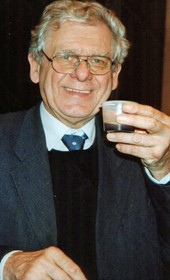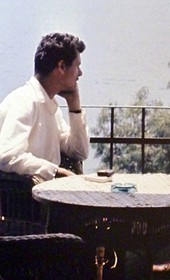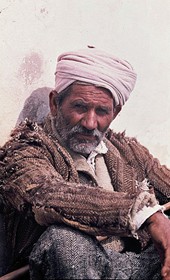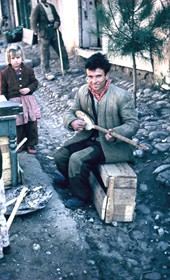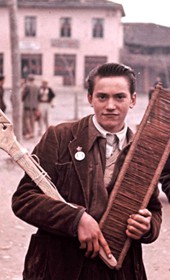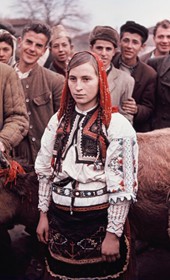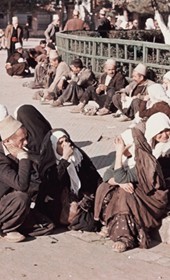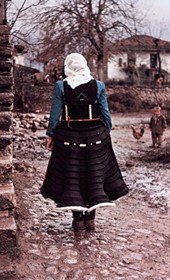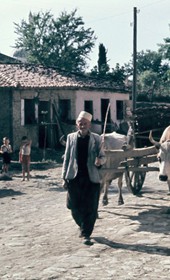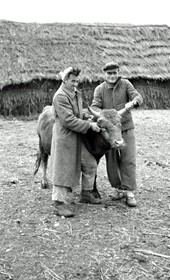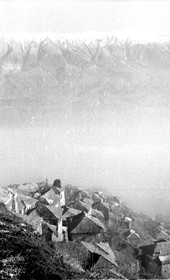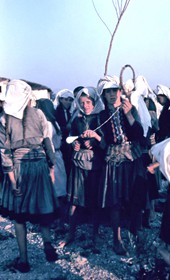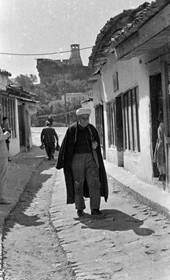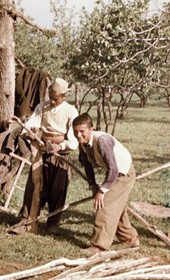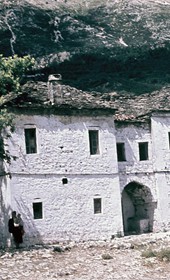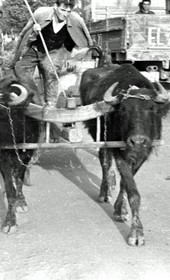| | Robert Elsie | AL Art | AL History | AL Language | AL Literature | AL Photography | Contact | |
Robert Elsie
Early Photography in Albania
BACK | AL Photography
The Photo Collection
of Wilfried Fiedler
Deutsch | ShqipAlbania in 1957
German linguist and specialist in Albanian, Wilfried Fiedler (b. 1933), studied Slavic and East European philology at the Humboldt University in (East) Berlin from 1951 to 1955. From 1955 to 1963, he worked as a research assistant at the Institute for German Folklore of the GDR Academy of Sciences there and finished his doctorate at the Humboldt University in 1961 with a dissertation on plural formations in Albanian. Fiedler was active as a research expert for the Academy of Sciences in Berlin, in particular from 1968 to 1990 as a member of the Central Institute for Linguistics, where he specialized in Albanian and Balkan philology. From 1991 to 1998, he served as professor of Albanian at the Institute for Comparative and Indo-European Linguistics of the University of Munich, as a successor to Martin Camaj.
The photo collection of Wilfried Fiedler constitutes an intimate diary of his private fascination with Albania. It is also a rare document of contemporary Albanian history, depicting as it does the rural world of impoverished communist Albania in the 1950s – and in partially colour photography which was unavailable to Albanian photographers at that time.
The collection stems from Fiedler’s first three visits to Albania: November-January 1956-1957, May-August 1957 and summer 1959, most of the photographs having been taken in 1957. Fiedler participated in that year in a milestone expedition in musicology that was organized by the (East) German Academy of Sciences and the State University of Tirana. It was led by the noted ethnomusicologists Erich Stockmann (GDR) and Ramadan Sokoli (Albania). The entire photo collection consists of approximately 635 negatives (389 colour negatives and 246 black-and-white) mainly on Agfacolor or Agfa Isopan F/Rapid film material. In addition to the Fiedler Collection, there are 292 negatives of the Stockmann Collection (Sammlung Stockmann Ident-Nr. VII N 2), preserved in the phonogram archives of the Staatliche Museen Preußischer Kulturbesitz in Berlin.
The Fiedler Collection was first presented to the public in October 2013 as an audiovisual project entitled "Echoes of the Past - Voices of the Future," organized by Dr Eckehard Pistrick and supported by the German Embassy in Albania:
www.tirana.diplo.de/Vertretung/tirana/de/...
Fiedler's photos focused on material culture and included many of the main historical attractions of Albania such as Gjirokastra, Butrint and Berat, but he also tried to capture scenes of everyday life in a country torn between old traditions and the growing influence of party directives. He showed that Albania was no longer a terra incognita but a country undergoing a dynamic social-cultural transformation, with propaganda posters, tables with state regulated food prices, graffiti commemorating Stalin or "friendship with the Soviet Union", and folklore ensembles.
Beyond its documentary and ethnographic value, the collection evinces artistic qualities in its depiction of everyday life far from urban centres and the control of the party.
This collection was kindly made available by Professor Fiedler.
© All rights reserved.
Eckehard Pistrick
Martin Luther University
Halle-Wittenberg, Germany
TOP
